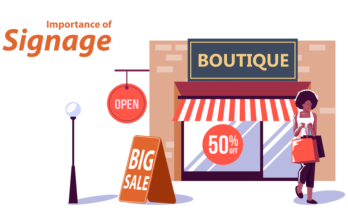The eCommerce market is poised to be worth $8 trillion by 2027. In such a competitive business landscape, simply launching a business or brand is insufficient. What sets you apart and encourages customers to select your brand over competitors offering similar products or services?
One way to accomplish this is smart customer targeting and providing a good experience when you interact with them. Be strategic when deciding how and whom to approach, and avoid generic sales pitches. Wondering how to accomplish this? Begin by refining your sales data. Only with accurate and enriched data can you connect with your target customers and ensure conversions.
Read on for the most effective sales data enrichment methods to help you achieve more intelligent customer targeting.
Sales data and customer targeting
We use sales data as an umbrella term for multiple data types, including
- Demographic data: Customer attributes like location, gender, age, name, etc.
- Firmographic data: Company’s location, size, industry, revenue, etc.
- Technographic data: Data on tools and technologies your target customers use.
- Intent and behavior data: Customers’ content consumption, interests, purchasing patterns, etc.
- Internal sales performance data: Data on deal closing rates, cart abandonment rates, quota attainment, etc.
Reaching out to potential customers who seek what you offer sounds more practical than cold outreach to everyone in your database. And this requires smarter customer segmentation and targeting based on your sales data analysis. Long story short – sales data is where your success lies.
How to enrich sales data for smarter customer targeting?
Here is a list of the top 5 sales data enrichment practices for smarter customer targeting.
Identify and stick to relevant data types for your sales strategy
Sales data encompasses numerous data types. However, only some of them, like contact details, behavioral patterns, purchasing history, intent, and firmographic data, are relevant for targeting customers.
You must stick to these relevant data types to get better insights into your sales performance. Look for numbers concerning potential and repeat customers, cart abandonment rates, casual visits, click-through rates on product landing pages, and even cold prospects.
Rethink your sales metrics and KPIs
Sales metrics and KPIs such as sales volumes, conversion rates, customer retention rates, and average deal sizes aid marketers and sales experts in monitoring and measuring business performance.
However, tracking just a few metrics over a long period of time may not reflect your progress completely. For instance, you may have a near-similar sales volume even after a year of smarter targeting efforts. However, adjusting your metrics every now and then based on the insights you need and including alternative metrics like cart abandonment rates and repeat customer counts can help you measure progress across different areas. Accordingly, you can tweak your key performance indicators (KPIs) to fit the selected metrics, say, achieving a low cart abandonment rate of <10%. Therefore, enriching sales data with varying metrics is vital to get a holistic view of sales performance.
Combine data from web trackers with LinkedIn for better targeting
Get a reliable and legitimate website tracker. These trackers accumulate technical information such as website visitors’ IP addresses. Use this information to segment and target customers based on their location with these steps.
- Begin by filtering and combining data for visitors from the same IP addresses. It will give you a rough location-wise distribution of your potential customers.
- Once you have a rough distribution of IP addresses, use a WhoIs lookup tool or any reverse DNS lookup tool to build on this data. Such tools help you source information like the domain name of the company that this visitor is associated with and their location by using their IP addresses. This way, you can begin creating an approximately ideal customer profile (ICP).
- For more information, refer to company profiling websites like Crunchbase, similarweb, Owler, etc., to get data on company sizes, revenue, etc. Please note that it’s a great way to analyze companies as potential customers, but you still won’t have the information of people within these companies. So, you will have to carry out other sales data enrichment practices to fill this gap. For instance, you can append business emails to this data using the “Contact Us” page on the company’s website. Further, you can contact them to connect with specific people and update your data with the information they share.
- Combine this information with what you find on LinkedIn, like job titles, company pages, employee profiles, etc., to connect with those most likely to convert. This way, your website works as a customer-targeting tool in itself.
Follow the Waterfall model for lead enrichment
Shift to the Waterfall method of sourcing lead data (if you are yet to). This method enhances cold outreaches by aggregating sales data from multiple sources, ensuring maximum coverage. For instance, when sourcing financial data about a customer company, refer to multiple sources like Crunchbase, Owler, Google News, PrivCo, etc.
If you cannot find it on Crunchbase, research on Owler. If you still don’t find anything, proceed to PrivCo or a similar resource. This method improves the likelihood of finding the prospective data from either of the sources.
Here is an example of using the Waterfall method to find a lead’s valid email address.
Combine internal and external sales data for better customer profiles
Typically, there are two broad categories of sales data: external and internal sales data.
- Any data about potential customers, including their engagement, preferences, demographics, and interactions with your products/services, is categorized as external sales data.
- On the other hand, internal sales data comprises information about your offerings, such as their product/service categories, sales performance, inventory records, etc.
Combining internal and external sales data can create a more complete database. When you analyze this enriched data, you can discover more intricate and previously undiscovered consumer behavior patterns and preferences.
Long-term benefits of sales data enrichment
If you want your business to succeed in the long run, you must streamline your sales data enrichment strategies. Once this happens, you’ll observe the following advantages over time.
Better marketing performance
Marketing and sales strategies rely on data. You cannot plan ahead without knowing what has worked in the past and what works now. Consequently, you must observe your sales performance. Based on this information, planning and channeling your marketing and sales efforts toward the best-performing approaches becomes much easier.
Easy identification of discrepancies in your sales data
Data quality is a challenge in sales data optimization and enrichment. However, when you proactively monitor your sales data, you can observe the problem areas and recurring issues, such as missing values in a particular category, lack of information, inconsistencies in data, etc. With this understanding, it becomes easier to flag areas of improvement and act accordingly. For instance, you could indulge in data standardization in case of inconsistencies like “Dr.” and “Doctor.”
More repeat customers
Updating sales data about former/existing customers and their purchasing history lets you quickly retarget them. Consider Amazon’s “Customers also bought this” feature. It shows visitors that people have purchased from you, instilling trust and reliability. The feature has been a game-changer in inducing more sales and getting repeat customers on Amazon. As per HubSpot, cross-selling this way can drive up revenue by over 30%! Naturally, you can only indulge in such practices when you have accumulated and updated customer data over a period of time. So, it makes good sense to prioritize sales data enrichment.
The takeaway
Whether it is B2C or B2B data enrichment, sales data holds the potential to help scale your business to greater heights and target more potential customers. However, to observe the upsides of sales data enrichment in sales performance, you must be consistent and conscious while collecting and updating customer data. Precision, consistency, and following the tips mentioned above are your way to go. If you still need assistance, you can outsource data enrichment to a suitable and reliable data enrichment company.




